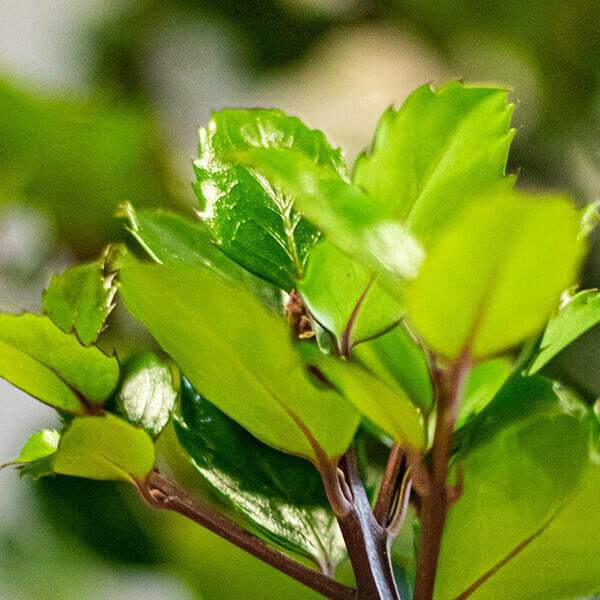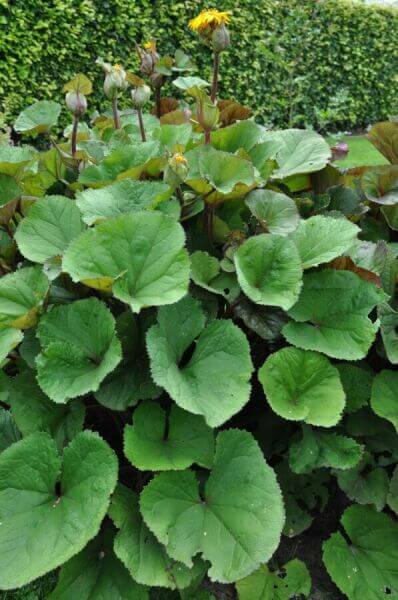Hedge Plants For Decorative Landscaping
Hedge Plants For Decorative Landscaping
Blog Article
Hedging Plants For Architectural Interest
Improve your garden's allure with lavish hedge ranges such as Yew (Taxus), Thuja, Laurel, Photinia, and Bamboo, celebrated for their structural stability and ecological benefits.
Yew and Thuja supply evergreen coverage and winter strength, while Laurel offers fast development and broad, fragrant leaves.
Photinia includes seasonal beauty with its vibrant red foliage, and Bamboo provides a low-maintenance, tranquil ambiance.
These hedges improve air quality, minimize noise, and develop tranquil, personal spaces.
Correct planting, spacing, and maintenance guarantee energetic development and eco-friendly harmony.
Check out how these lavish varieties can elevate your garden's beauty and well-being.
Secret Takeaways
Transform Your Garden With Lush Hedge Ranges
- Select Yew for its thick, evergreen growth and unparalleled longevity.
- Select Laurel for its fast development and broad leaves, guaranteeing quick personal privacy.
- Select Photinia for its vibrant seasonal foliage, which turns a striking dark red.
- Utilize Bamboo for a low-maintenance, winter-hardy hedge with visual appeal.
- Space plants 2-3 per meter and prune regularly for optimal development and health.
Popular Hedge Plants
When transforming a garden with lavish hedge varieties, it's essential to think about popular hedge plants such as Yew, Thuja, Laurel, and Photinia due to their distinct qualities and advantages.
Yew (Taxus) is highly respected for its longevity and thick, green growth, making it a prime option for enduring landscapes.
Thuja is kept in mind for its evergreen foliage and robust winter durability.
Photinia includes seasonal vibrancy with red leaves that darken in time, developing vibrant visual appeal.
Laurel provides quick growth and aromatic, broad leaves, ideal for quick privacy.
Additionally, Bamboo is an exceptional choice for ambiance, using a low-maintenance, winter-hardy option that improves the garden's visual with its elegant, swaying walking sticks.
These choices deal with a variety of horticultural requirements and choices.
Benefits of Garden Hedges
Garden hedges provide a multitude of benefits, making them an important addition to any landscape. These natural barriers are cost-efficient to implement and supply significant wind security, improving air blood circulation and adding to noise reduction. The dense foliage of hedges like Thuja and Beech guarantees personal privacy by obstructing visibility, creating a secluded and peaceful environment.
Hedges likewise play an important function in microclimate policy, supplying a steady environment that cultivates plant growth and minimizes temperature changes. Their complex leaf structures filter toxins, enhancing air quality and adding to a healthier garden community.
Furthermore, hedges master noise decrease, soaking up and deflecting acoustic waves to lower ambient sound levels. This dual functionality of offering both acoustic and visual personal privacy boosts the total serenity and aesthetic appeal of any garden.
Planting and Upkeep Tips
For an effective hedge, meticulous preparation of the planting area is essential. Ensure the soil has correct pH and drainage to support strong root development.
Area the plants properly for the chosen species. Water the hedge frequently throughout its preliminary growth stage, changing as needed with seasonal modifications.
Carry out a methodical insect control and disease avoidance method, using organic or chemical treatments when required. Frequently check for aphids, mites, and fungal infections.
Apply mulch to keep wetness and reduce weeds. Seasonal pruning promotes thick development and air flow, essential for plant health.
Following these standards will help you cultivate a lively, well-kept hedge that boosts the appeal of your garden.
Spacing and Cutting Guidelines
Spacing and Trimming Standards
Proper spacing and cutting are important for cultivating healthy, visually appealing hedges. Appropriate spacing ensures each plant gets sufficient nutrients, light, and airflow.
Follow these guidelines for ideal hedge maintenance:
- Spacing: Position hedge plants 2-3 plants per meter to motivate robust development.
- Pruning Methods: Routine pruning is vital for maintaining preferred hedge height and shape. Cut new development in summertime and cut back older wood throughout winter.
- Seasonal Care: Adjust cutting approaches and schedules according to seasonal requirements to guarantee plant health.
- Hedge Height: Frequently monitor and trim to keep the wanted hedge height and attain uniform looks.
Adhering to these steps will ensure your hedge grows, enhancing both the appeal and performance of your garden.
Picking the Right Hedge
Picking the Right Hedge
Selecting the suitable hedge includes evaluating elements such as fully grown height, foliage density, and ecological strength. Effective hedge plant selection requires understanding each types' growth characteristics and site-specific adaptability.
For example, Yew (Taxus) provides outstanding durability and dense development, while Thuja is noteworthy for its winter strength. Furthermore, thinking about upkeep requirements is crucial; fast-growing species like Laurel or Privet need regular trimming, whereas low-maintenance options like Bamboo or Ivy may be preferable for those looking for very little maintenance.
Ecological aspects such as soil type, light schedule, and wetness conditions must likewise direct the selection process. This careful approach ensures the chosen hedges will thrive, supplying both aesthetic and functional benefits to the garden landscape.
Delivery and Planting Advice
To guarantee your hedge plants prosper, they need to be provided by specialized carriers and planted quickly upon arrival.
Follow these essential actions for successful planting:
- Soil Preparation: Enhance the soil with natural matter to improve drain and nutrient material.
- Planting Depth: Produce a trench two times the width and equal to the depth of the root ball.
- Watering Strategies: Water completely after planting, keeping the soil regularly wet but not saturated.
- Mulching: Use a layer of mulch to retain wetness and reduce weeds.
Client Assistance and Service
Offered the crucial role of prompt support in horticultural pursuits, our consumer support team is offered 6 days a week through telephone, e-mail, and social networks to use skilled guidance and quickly address any concerns. Their commitment to fast reaction times makes sure consumer satisfaction by resolving inquiries connected to plant health, optimal planting techniques, and maintenance schedules.

Communication Technique
Within 24 hours
6 days a week
This thorough assistance system, reinforced by a stellar 9.3/ 10 customer rating, highlights our dedication to enhancing the gardening experience for each customer.
Regularly Asked Concerns
How Long Does It Consider Hedge Plants to Develop?
Hedge plants generally need one to 3 years to end up being totally developed, with the specific period differing by types and growing conditions.
Efficient care throughout this vital duration is vital for robust growth. Consistent watering, vigilant weed control, and appropriate fertilizer application are pivotal in promoting strong root advancement.
For instance, fast-growing types like Laurel may establish more quickly, while slower-growing ranges such as Yew may take longer. Persistent maintenance accelerates the facility procedure, leading to healthy and dense hedges.
What Are the very best Hedge Plants for Personal Privacy?
The concern of the best hedge plants for privacy includes evaluating evergreen and deciduous choices.
Evergreen hedges like Thuja, Laurel, and Cypress provide year-round protection, making sure continuous personal privacy.
On the other hand, deciduous hedges such as Beech provide seasonal privacy, shedding leaves in cooler months.
Secret maintenance pointers for personal privacy hedges include routine trimming, fertilizing in spring, and proper spacing-- normally 2 to 3 plants per meter.
Furthermore, consistent watering and thorough weed removal are vital for promoting healthy, dense development.
Can Hedge Plants Draw In Wildlife to My Garden?
Yes, hedge plants can attract wildlife to your garden by offering essential advantages like shelter, food, and nesting sites, therefore improving regional biodiversity. For instance, yew, holly, and laurel are exceptional for drawing in birds, while ivy supports a range of bugs.
Nevertheless, it is essential to keep in mind that there are some drawbacks, such as increased maintenance to handle pests and routine maintenance. Carefully choosing and maintaining hedge varieties can assist stabilize these benefits and downsides, eventually fostering a sustainable and lively ecosystem in your garden.
Are There Any Blooming Hedge Plants Available?
Yes, there are flowering hedge plants available that can enhance the charm of your garden.
For instance, Elaeagnus, likewise referred to as Olive Willow, produces fragrant white flowers in the fall, including a touch of sophistication.
Photinia, another popular option, showcases vibrant red leaves that develop into an abundant green, developing a vibrant visual effect throughout the seasons.
To ensure these plants prosper, it's necessary to practice correct pruning techniques and seasonal maintenance, such as trimming new growth in the summertime and cutting down in the winter season.
These procedures will assist keep the health and visual appeal of your blooming hedges.
How Do I Avoid Bugs in My Hedge Plants?
To avoid bugs in hedge plants, use natural bug control methods hedge plants and maintain appropriate hedge care. Introduce useful bugs like ladybugs, which take advantage of damaging insects, to produce a balanced community.
Routinely examine your hedges for indications of invasion and immediately eliminate any affected parts to prevent the spread. Ensure the health of your hedges by using well balanced fertilizers and supplying sufficient water.
Make use of mulching to keep soil moisture and proper spacing to reduce plant tension and promote robust development. These practices collectively assist in lessening insect issues and maintaining a healthy hedge.
Conclusion
In essence, choosing the ideal hedge ranges such as Yew, Thuja, and Laurel can transform any garden into a tranquil sanctuary. These plants offer year-round greenery, enhance visual appeal, and offer practical advantages like noise reduction and wind protection.
Correct planting strategies, precise spacing, constant watering, and seasonal trimming are important for ideal development.
Dependable delivery services and professional client support guarantee a smooth experience from purchase to planting, making it easier than ever to elevate your outdoor space.
Garden hedges provide a multitude of benefits, making them a valuable addition to any landscape. These natural barriers are economical to carry out and supply substantial wind defense, boosting air blood circulation and contributing to noise decrease. The dense foliage of hedges like Thuja and Beech makes sure privacy by obstructing exposure, creating a peaceful and secluded environment.

Pruning Methods: Regular pruning is essential for keeping preferred hedge height and shape. Trim brand-new development in summer and cut back older wood throughout winter.
Report this page